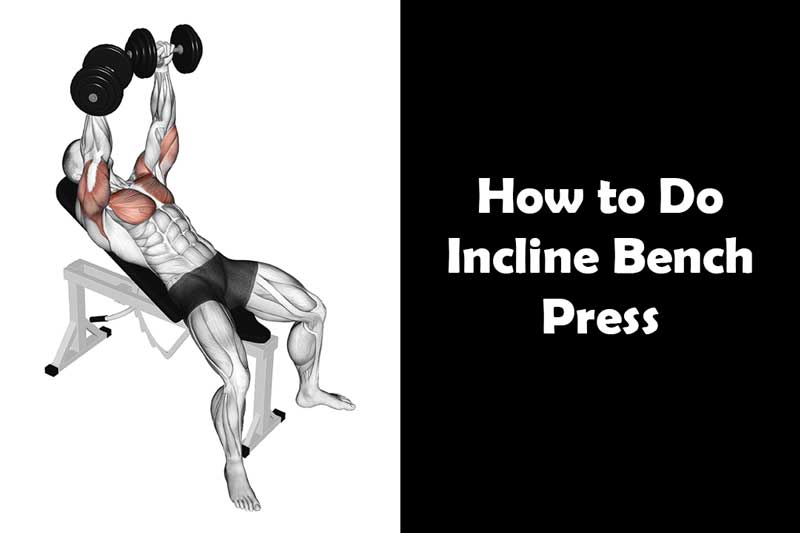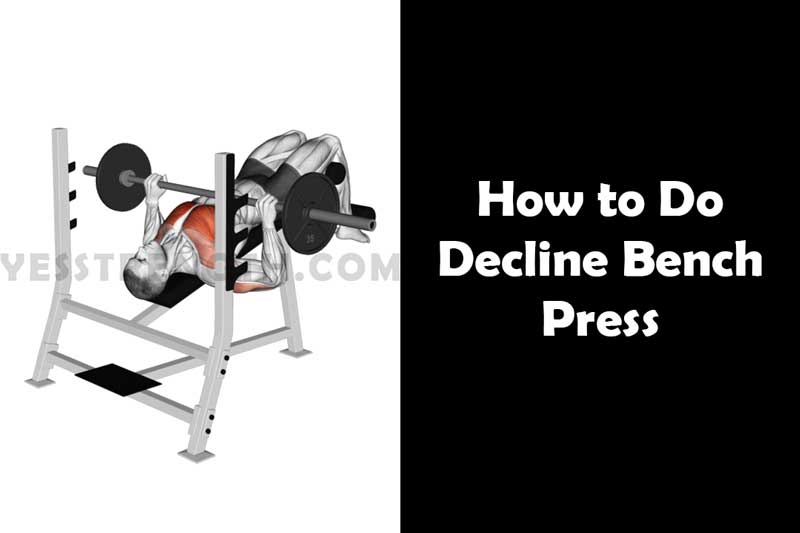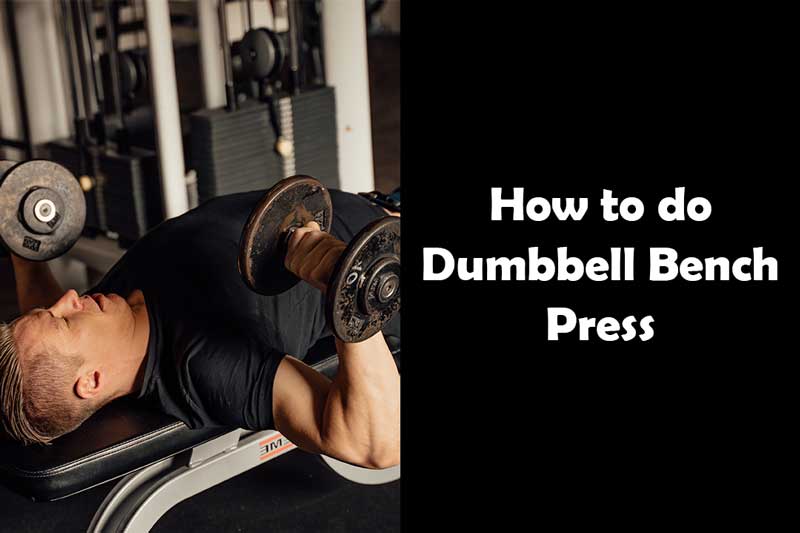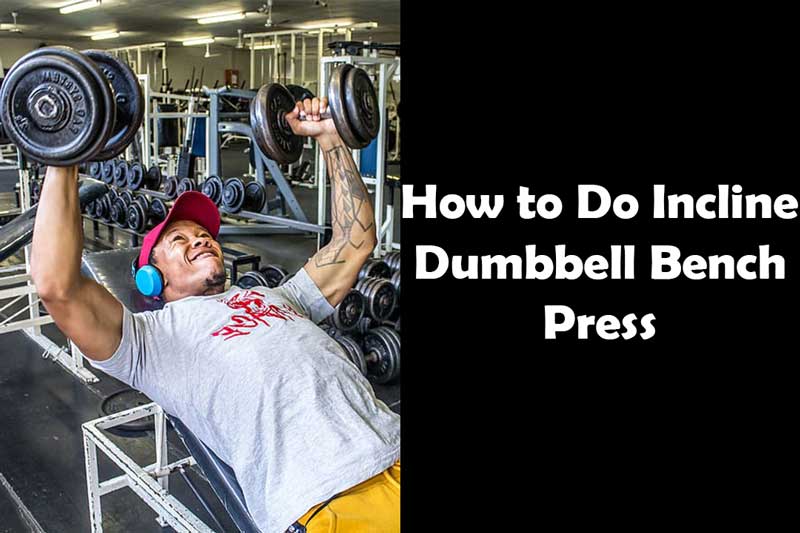Out of all variations of bench press (flat bench press, decline bench press), incline bench press is the best for effectively engaging the upper chest. It is an effective compound movement that helps in building strength and muscle mass in the upper body.
Whether you are a beginner or an experienced lifter, learning the proper technique for the incline bench press is crucial for maximizing your results and minimizing the risk of injury.
In this article, we will guide you through the step-by-step process of performing the incline bench press correctly.
Introduction to Incline Bench Press
The incline bench press is a variation of the traditional bench press exercise, where the bench is set at an inclined angle of around 30 to 45 degrees.
This positioning targets the upper chest muscles, shoulders, and triceps to a greater extent compared to the flat bench press.
It allows for a more comprehensive upper body workout and helps in developing a well-rounded physique.
Benefits of Incline Bench Press
1) Upper Chest Development
The incline bench press places a greater emphasis on the upper chest muscles (pectoralis major – clavicular head).
This targeted stimulation helps in developing a well-defined, full-looking chest. A well-developed upper chest creates a balanced and aesthetic physique.
2) Shoulder Strength and Stability
The incline bench press significantly engages the front deltoids (shoulder muscles). By regularly incorporating this exercise into your routine, you can enhance shoulder strength and stability.
Stronger shoulders contribute to improved performance in various upper body movements and reduce the risk of shoulder injuries.
3) Tricep Engagement
While primarily targeting the chest, the incline bench press also activates the triceps as secondary muscles.
The triceps play a crucial role in elbow extension and assist in pushing the weight during the exercise. Incline bench press helps in strengthening and developing the triceps, contributing to overall arm strength.
4) Core Activation
Maintaining proper form during the incline bench press requires core stability. The muscles in your abdomen and lower back engage to stabilize your body throughout the exercise.
This added core activation helps strengthen the abdominal muscles and improve overall core strength.
5) Functional Strength
The incline bench press mimics pushing movements used in everyday activities, such as pushing open a heavy door or lifting objects overhead.
By incorporating this exercise into your routine, you can enhance your functional strength, making daily tasks easier and more manageable.
6) Muscle Hypertrophy
The incline bench press is an effective compound exercise that recruits multiple muscle groups simultaneously.
This compound movement stimulates muscle growth and hypertrophy not only in the chest but also in the shoulders, triceps, and stabilizer muscles.
Consistent training and progressive overload can lead to increased muscle mass and definition.
7) Athletic Performance Enhancement
Strong chest, shoulders, and triceps are vital for various athletic activities, including sports that involve throwing, pushing, or lifting.
The incline bench press helps develop the muscles involved in these movements, improving overall athletic performance.
8) Increased Caloric Expenditure
Compound exercises like the incline bench press require more energy due to the involvement of multiple muscle groups.
This increased energy expenditure can contribute to burning more calories during your workout, making the incline bench press an effective exercise for weight management and fat loss.
Incline Bench Press: Muscles Worked
During the incline bench press, you work several muscles in your upper body. These muscles include:
1) Upper Chest
The incline bench press targets the upper part of your chest, helping to make it stronger and more defined.
2) Front Shoulders
Your front shoulder muscles get a good workout during the incline bench press. They assist in lifting the weight and contribute to the pressing motion.
Back of the Arms
The muscles at the back of your upper arms, called the triceps, are also involved. They help in straightening your arms and provide stability during the exercise.
3) Side of the Ribs
The muscles along the sides of your ribcage, known as the serratus anterior, play a role in keeping your shoulders stable and in the correct position.
4) Upper Back
The upper fibers of the trapezius muscle, located in your upper back and neck, help in keeping your shoulders in the right position during the incline bench press.
5) Between Shoulder Blades
The muscles between your shoulder blades, called the rhomboids, assist in keeping your shoulders stable and maintaining good posture during the exercise.
6) Upper Arm
While not the main focus, the biceps muscles in the front of your upper arms provide support and stability during the incline bench press.

Setting Up the Incline Bench
- Adjust the Angle: Set the incline bench to the desired angle, typically between 30 to 45 degrees. Ensure that the bench is secure and stable before starting.
- Position Yourself: Sit on the bench with your feet firmly planted on the floor. Your back should be pressed against the bench, maintaining a neutral spine.
- Grip the Bar: Grab the barbell with a grip slightly wider than shoulder-width apart. Make sure your palms are facing away from you (overhand grip).
- Lift the Bar: Lift the barbell off the rack and hold it directly above your upper chest with arms fully extended. This is your starting position for the exercise.
Proper Technique and Form
- Lower the Bar: Slowly lower the barbell towards your upper chest, keeping your elbows at a 45-degree angle to your torso. Maintain control and a steady pace.
- Pause and Contract: When the barbell is close to touching your chest, pause for a brief moment and contract your chest muscles.
- Push the Bar: Exhale and push the barbell back up to the starting position by extending your arms. Keep your chest engaged throughout the movement.
- Repeat: Perform the desired number of repetitions, maintaining proper form and control. Focus on a smooth and controlled motion, avoiding any bouncing or jerking.
Variations of Incline Bench Press
- Dumbbell Inclined Bench Press: Instead of using a barbell, you can use dumbbells to perform the inclined bench press. This variation allows for greater range of motion and independent arm movement.
- Reverse Grip Inclined Bench Press: Changing your grip to an underhand grip (palms facing towards you) targets the upper chest and biceps to a greater extent.
- Smith Machine Inclined Bench Press: Utilizing a Smith machine provides added stability and control during the exercise, making it suitable for beginners or those recovering from an injury.
Common Mistakes to Avoid
- Arching the Lower Back: Maintain a neutral spine throughout the exercise. Avoid excessive arching of the lower back, as it can strain the lower back muscles.
- Lifting Excessive Weight: Focus on using proper form and technique rather than lifting heavy weights. Gradually increase the weight as you become comfortable and stronger.
- Flaring Elbows: Keep your elbows at a 45-degree angle to your torso. Flaring your elbows excessively can put unnecessary stress on your shoulder joints.
- Bouncing the Bar: Avoid bouncing the bar off your chest. This eliminates the tension on your chest muscles and increases the risk of injury.
- Neglecting Warm-up Sets: Always start with a few warm-up sets using lighter weights to prepare your muscles and joints for the workout.
Safety Tips
- Use a Spotter: When performing heavy lifts, it is advisable to have a spotter present to assist you in case you need help or reach muscle failure.
- Start with Light Weights: If you are new to the incline chest press, begin with lighter weights to learn the proper form and gradually progress as your strength increases.
- Listen to Your Body: Pay attention to any discomfort or pain during the exercise. If you experience any unusual pain or discomfort, stop immediately and consult a healthcare professional.
Incorporating Incline Bench Press into Your Workout Routine
- Warm-up: Start your upper body workout routine with a few minutes of light cardio to increase blood flow and warm up your muscles.
- Compound Movements: Perform the incline bench press after compound exercises like squats or deadlifts to maximize your strength and energy levels.
- Repetitions and Sets: Aim for 8 to 12 repetitions per set to focus on muscle hypertrophy and perform 3 to 4 sets for a complete workout.
- Rest and Recovery: Allow adequate rest between sets and include a rest day between incline bench press workouts to promote muscle recovery and growth.
- Progressive Overload: Gradually increase the weight or repetitions over time to challenge your muscles and stimulate continuous growth.
Why is the Incline Bench Press tougher than other bench presses?
The incline bench press is often considered tougher than other variations of the bench press due to several factors. Other bench presses include flat bench press and decline bench press. Here are some reasons why the incline bench press can be more challenging:
1) Increased Range of Motion
When performing the inclined bench press, the angle of the bench places the shoulders and upper chest in a position that requires a greater range of motion compared to the flat bench press.
This increased range of motion demands more strength and stability from the targeted muscles.
2) Targeting the Upper Chest
The incline bench press specifically targets the upper chest muscles (pectoralis major), which are generally weaker for many individuals compared to the mid and lower chest.
Since the upper chest is involved to a greater extent, it requires additional effort to lift the weight.
3) More Emphasis on Shoulder Activation
The inclined angle of the bench shifts the emphasis from the lower chest to the shoulders.
This means that the front deltoids (shoulder muscles) are more engaged during the exercise, adding an extra level of difficulty and demand on the upper body.
4) Increased Recruitment of Stabilizer Muscles
The inclined bench press engages additional stabilizer muscles, such as the trapezius, rhomboids, and serratus anterior, to maintain proper form and balance.
This increased demand on the stabilizer muscles adds to the overall difficulty of the exercise.
5) Reduced Mechanical Advantage
The inclined angle decreases the mechanical advantage compared to the flat bench press.
This means that you have less leverage to lift the weight, making it more challenging to push the barbell or dumbbells against gravity.
6) Higher Activation of Triceps
In the incline chest press, the triceps are also more involved as secondary muscles to assist in pushing the weight.
The triceps play a significant role in locking out the movement, making it harder to complete each repetition.
7) Potential Limitations in Strength
Due to the increased difficulty of the incline bench press, individuals may find that they can lift less weight compared to the flat bench press.
This can be discouraging for some, but it is important to focus on proper form and gradually increase the weight over time.
Conclusion
The incline bench press is a valuable exercise for targeting the upper chest muscles, shoulders, and triceps. By following proper technique and form, you can maximize your results and minimize the risk of injury.
Remember to start with lighter weights, focus on control and form, and gradually increase the intensity as your strength improves. Incorporating the incline bench press into your workout routine will help you build a strong and well-defined upper body.
Frequently Asked Questions (FAQs)
1) Is the inclined bench press suitable for beginners?
Yes, the inclined bench press is suitable for beginners and for everyone. Start with lighter weights and focus on proper form and technique before progressing to heavier loads.
2) How many sets and reps should I do for the incline bench press?
Aim for 8 to 12 repetitions per set and perform 3 to 4 sets for an effective workout. Adjust the weight based on your strength and goals.
3) Can I use dumbbells instead of a barbell for the inclined bench press?
Yes, using dumbbells for the inclined bench press is a viable option. It allows for greater range of motion and independent arm movement, engaging stabilizer muscles.
4) What other exercises can I combine with the incline chest press?
You can combine the incline chest press with exercises like chest flyes, push-ups, shoulder presses, and tricep dips to create a comprehensive upper body workout routine.
5) How long does it take to see results from the incline bench press?
Results vary depending on various factors such as individual genetics, training intensity, and nutrition.
Consistent training and a balanced diet will help you see results over time. Stay committed and patient to achieve your desired goals.





